 Summer is fast approaching and if you’re a teacher, it’s the ideal time to make a summer reading list. I want to encourage you to think about what titles might be just the ticket that reaches that reluctant reader in your class next year. Maybe you’re changing grades, changing schools or just need a little inspiration beyond the Chapters display. I also want to share some ideas to help you use the books you read over the summer to capture the hearts and minds of your students next year. In this blog, I’m going to share:
Summer is fast approaching and if you’re a teacher, it’s the ideal time to make a summer reading list. I want to encourage you to think about what titles might be just the ticket that reaches that reluctant reader in your class next year. Maybe you’re changing grades, changing schools or just need a little inspiration beyond the Chapters display. I also want to share some ideas to help you use the books you read over the summer to capture the hearts and minds of your students next year. In this blog, I’m going to share:
- a sample book chat (for Orbiting Jupiter)
- potential titles for your ‘to be read’ list (grades 4-8)
- tech tricks to engage readers
Book Chats
Our portfolio has been peddling the strategies found in Steven Layne’s Igniting a  Passion for Reading because we’ve witnessed their power. In fact, you have experienced an extraordinary speaker who sparkles with passion if you came to TVLitCon16 last year where he was our keynote speaker. Layne’s idea of a Hot Read is a book at the students’ level that a teacher reads and then ‘sells’ to students. He talks about the power of a book chat to hook readers into wanting to read a book. Now this isn’t just any book chat where someone drones on giving a summary and sometimes a spoiler alert of the book. Below you can find a book chat that I created for the novel, Orbiting Jupiter. I have shared this title with many teachers this year who in turn have ‘sold’ it to many students. When you take a risk and become a character, the world is your oyster. Teachers AND students hang on your pearls of wisdom from a great introduction to a story…
Passion for Reading because we’ve witnessed their power. In fact, you have experienced an extraordinary speaker who sparkles with passion if you came to TVLitCon16 last year where he was our keynote speaker. Layne’s idea of a Hot Read is a book at the students’ level that a teacher reads and then ‘sells’ to students. He talks about the power of a book chat to hook readers into wanting to read a book. Now this isn’t just any book chat where someone drones on giving a summary and sometimes a spoiler alert of the book. Below you can find a book chat that I created for the novel, Orbiting Jupiter. I have shared this title with many teachers this year who in turn have ‘sold’ it to many students. When you take a risk and become a character, the world is your oyster. Teachers AND students hang on your pearls of wisdom from a great introduction to a story…
Orbiting Jupiter, by Gary D. Schmidt
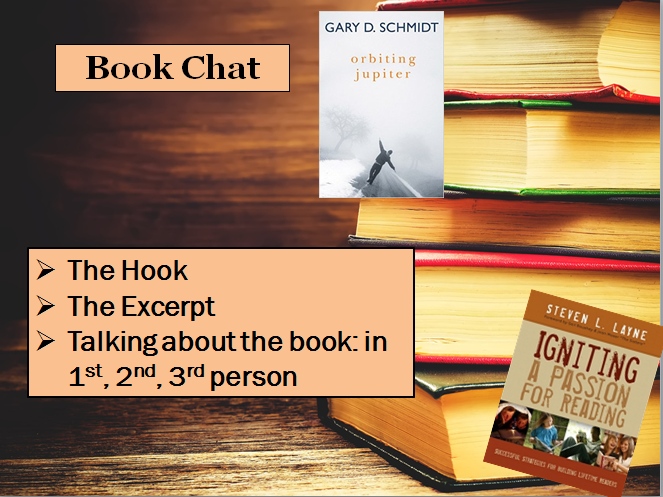
Structure considerations for a book chat:
- 6-8 minutes in length
- Hook: some way of engaging your audience: could be a question that is relevant to the class; could be asking a ‘what if’ question; could be you talking in accent/role; could use props or costumes
- Excerpt: brief reading aloud…does not need to be opening. But has to be a part that doesn’t require a lot of framing for people to appreciate
- Talking about the book can be done in one of 3 voices: 1st person; 2nd person; 3rd person
Hook:
Have you ever been on the receiving end of some act of kindness you didn’t really deserve? Somebody, maybe a friend, or a teacher, maybe a stranger, they did some kind thing that just helped you out. I was a single mom of 3 youngsters when we headed up to Orillia for Christmas. We drove into a wall of snow in Barrie and with very near bald tires, I was a stressball! I just couldn’t make it up a hill and feared colliding with other cars dotting the highway and ditches. I pulled over at a side road and just parked. I probably cried. And through the snow this man walked towards us, an angel. He’d been shovelling in the midst of the storm and must have seen me. Once I rolled down the window, he took one look at my face and the 3 girls (7, 5 and 3 years old) and invited us home for supper. A Muslim family whose house was brilliantly decorated for the season. We talked, shared supper and they invited us to stay overnight. But once the weather cleared, we set off again, a second chance to get to our destination. A gift of kindness from a stranger I will never forget.
Random acts of kindness remind us to pay it forward. Sometimes second chances in life can be even more powerful. We all have personal stories that might surface when thinking about second chances. I would invite you to share a story that echoes an unexpected kindness , or second chance, with your class and then ask them to think of a time.
Because … this story is about second chances. It’s about a family that gives a boy a second chance …as his foster family.
Excerpt: Opening pages
Becoming the character, 1st person perspective:
“I’m Joseph. I’ve seen my share of crazy. I’ve lived a whole lifetime and I’m not even 14 yet. My family, well, my dad…he’s an angry man, doesn’t want me around, well unless he’s got a point to prove. He doesn’t really know how to be a dad.
But then I met Maddie. She gave me hope, she gave me purpose. I’d walk miles just to see her through the window. I mean yeah, she was way outta my league…rich people…but I knew it would work out…because we loved each other.
But then shit happened. The world just fell apart. I don’t know. One minute you’re planning a life and planning for a baby, and the next, you’re on a wild ride and you’re in juvie. I don’t know why Jack’s family took me in, or why they believe in me. But now all I gotta do is get my daughter. All I want to do is get a piece of what Maddie and I had. You know?”
Themes the story explores:
Grace and forgiveness, the power of love, assumptions about people, quiet strength of the father, loyalty, the ‘I got your back’ mentality. Something unique about this story is the brooding mood vividly matched by the harshness of winter. In fact, it’s like the setting is a character in the story, intertwined with the events. Kids will appreciate the age of the characters, the raw emotions and events (bullying, teen pregnancy, etc). You will cry.
Hot Reads for YOU!
The benefits of reading a book and doing a book chat before sharing with your students is…you know your students best. My colleague Jane and I were just talking about this today. We pondered: when do you know if a book is appropriate for a particular grade? What cues do you look for when deciding its target audience? I have just finished Ibi Zuboi’s American Street which is a jarring raw story of family ties with strong complex female leads. Its characters face immigration, detainment, loyalty, drugs, loss of life, domestic abuse. You might think this is not a grade 8 novel. But I would answer: you have to read it because I don’t know your students. I don’t know your community. I do know that kids need to see themselves reflected in our stories, and we can use story to launch conversations about worlds different from our own.
just finished Ibi Zuboi’s American Street which is a jarring raw story of family ties with strong complex female leads. Its characters face immigration, detainment, loyalty, drugs, loss of life, domestic abuse. You might think this is not a grade 8 novel. But I would answer: you have to read it because I don’t know your students. I don’t know your community. I do know that kids need to see themselves reflected in our stories, and we can use story to launch conversations about worlds different from our own.
Here’s my current list of Hot Reads, but they’re not all recent. However, if you’re looking to grow your classroom library, perhaps this list will help you.
Tech Tricks
I’ve used book chats, padlets, video clips, podcasts, connected with authors via twitter…any means to wrap around a book that will inspire students to read the book. They augment my passion, not replace it.
You can find padlets for a selection of Hot Reads from a project I collaborated on with Jen Aston, Sabrina Tyrer and Ryan Matthews a couple of years ago. We each generated a handful of padlets and then created QR codes to affix to the front cover so students could pick up a title and learn more about the author, the story, the background while deciding whether to read it.
A quick google search can sometimes provide nuggets like this podcast from The Yarn which offers an interview with Gary D. Schmidt, author of Orbiting Jupiter. This is a podcast that I’d save until after reading the book as it gives valuable insight into the genesis of the story. Did I say you’ll cry already?
Perhaps you’ll find a video clip of a favourite author that gives you just a little more insight to who they are, why they write, where they’re from, like this clip of Ibi Zoboi, author of American Street. Maybe it will inspire your students to create their own video…something to let their readers know a bit more about who they are as writers.
Students can connect with authors via twitter. Maybe you and your students might consider doing a video book review. Don’t be surprised when the author responds! Here is a clip from Woodland Heights.
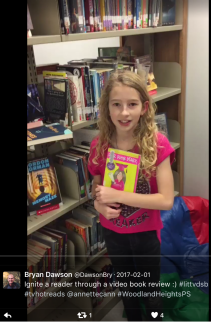
Imagine students walking into your class in September and seeing a Hot Reads display with the titles of books you’ve read over the summer to now share with them. Create some excitement around reading. We have had different projects devoted to Igniting a Passion for Reading using Steven Layne’s book. Here are the most recent: Day 1 and Day 2. Our goal is to inspire teachers to be the lead readers in their classrooms so we can inspire a generation of readers.
I’m also compiling a list of books to read over the summer. What might you suggest for me? What’s been getting a lot of buzz in your classroom recently? Have you used some engaging tech platforms to turn kids on to reading a book?





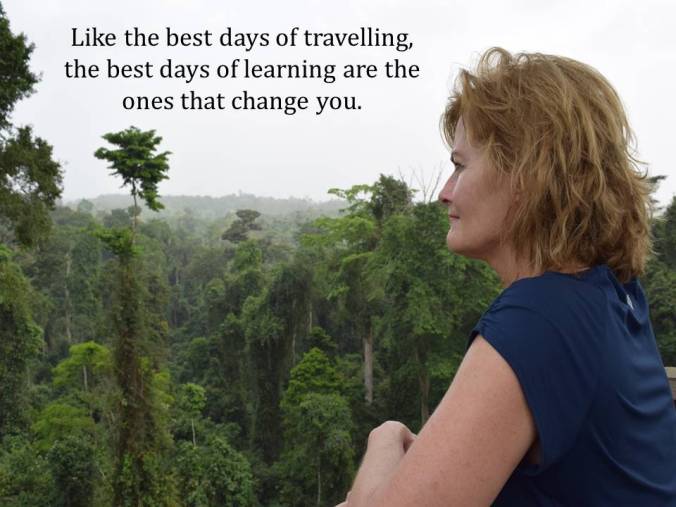


 What might I expect from a middle grade novel by Jason Reynolds? Does an author switch gears and voice to appeal to a younger audience? As co-author of All American Boys, he equipped we northerners with a glimpse into the thorny persistence of racism in the States as manifested in the ever present news coverage of racialized police practice and the black lives matter movement (more prevalent in the US but not to suggest its absence here in Canada). To be sure, the weighty issues of mental health, divorce, gun violence, suicide, alcohol abuse are all still evident in this novel, but somehow Reynolds handles these with such delicate care and sensitivity that you see them as understood from a preteen’s life view. The potential gravity is lifted by the spirited writing and dialogue tickling your tongue, begging to be read aloud; the tea-drinkin’, pea-pickin’, poop-scoopin’ daily chores of a couple of brothers from Brooklyn visiting their grandparents in Virginia for the summer. The vernacular is entertaining, matching the nunya bidness attitude of the characters. As a reader, you come to terms with the family’s history alongside the lead character, Genie. The teacher in me could swoon about Genie’s obsession to document and number his inquiry questions. In fact, the story launches out of one such question that plays with words and gives bathroom humour its due respect (eg. poopidity). In this way we truly gain insight into the character by seeing, not only hearing, what he’s thinking; that black and white demonstration of making thinking visible. Across the book you’ll find a grocery list of inquiries that dog the character as events provoke analysis. They range from scientific to philosophical:
What might I expect from a middle grade novel by Jason Reynolds? Does an author switch gears and voice to appeal to a younger audience? As co-author of All American Boys, he equipped we northerners with a glimpse into the thorny persistence of racism in the States as manifested in the ever present news coverage of racialized police practice and the black lives matter movement (more prevalent in the US but not to suggest its absence here in Canada). To be sure, the weighty issues of mental health, divorce, gun violence, suicide, alcohol abuse are all still evident in this novel, but somehow Reynolds handles these with such delicate care and sensitivity that you see them as understood from a preteen’s life view. The potential gravity is lifted by the spirited writing and dialogue tickling your tongue, begging to be read aloud; the tea-drinkin’, pea-pickin’, poop-scoopin’ daily chores of a couple of brothers from Brooklyn visiting their grandparents in Virginia for the summer. The vernacular is entertaining, matching the nunya bidness attitude of the characters. As a reader, you come to terms with the family’s history alongside the lead character, Genie. The teacher in me could swoon about Genie’s obsession to document and number his inquiry questions. In fact, the story launches out of one such question that plays with words and gives bathroom humour its due respect (eg. poopidity). In this way we truly gain insight into the character by seeing, not only hearing, what he’s thinking; that black and white demonstration of making thinking visible. Across the book you’ll find a grocery list of inquiries that dog the character as events provoke analysis. They range from scientific to philosophical: Are there themes and concepts to explore with students to gird them with new insights into the human experience? Yes, like empathy, forgiveness (EVERY character bears witness to this), letting go to move forward, coming of age, looking out for family, etc. Maybe it’s me as an adult reader who brings all my background knowledge into re-writing the story. I fell for the symbolism of the caged birds. You see, Grandpop’s blindness instigates his self-imposed house imprisonment. His refuge is an off limits space devoted to a Narnia-esque ‘outdoor indoor’ room brimming with trees, plants and 5 caged birds (named after the Jackson Five!) Grandpop has chosen a replica of a childhood scene tucked inside his home, trapping himself and the birds where it is safe. This closed off space mirrors not only his visual impairment but his impaired relationships, such as the invisible barrier between he and his son, the boys’ father. As Genie and Grandpop bond and learn to trust each other, Genie unlatches the psychological and physical door that empowers grandpop to bravely venture outdoors. At night. With Genie as his guide. What’s perhaps most compelling to me was that the introduction into the open physical space enables, indeed precedes, the psychological space that grandpop experiences. He literally has to get comfortable walking outdoors before his emotions can be revealed and relationships repaired.
Are there themes and concepts to explore with students to gird them with new insights into the human experience? Yes, like empathy, forgiveness (EVERY character bears witness to this), letting go to move forward, coming of age, looking out for family, etc. Maybe it’s me as an adult reader who brings all my background knowledge into re-writing the story. I fell for the symbolism of the caged birds. You see, Grandpop’s blindness instigates his self-imposed house imprisonment. His refuge is an off limits space devoted to a Narnia-esque ‘outdoor indoor’ room brimming with trees, plants and 5 caged birds (named after the Jackson Five!) Grandpop has chosen a replica of a childhood scene tucked inside his home, trapping himself and the birds where it is safe. This closed off space mirrors not only his visual impairment but his impaired relationships, such as the invisible barrier between he and his son, the boys’ father. As Genie and Grandpop bond and learn to trust each other, Genie unlatches the psychological and physical door that empowers grandpop to bravely venture outdoors. At night. With Genie as his guide. What’s perhaps most compelling to me was that the introduction into the open physical space enables, indeed precedes, the psychological space that grandpop experiences. He literally has to get comfortable walking outdoors before his emotions can be revealed and relationships repaired.

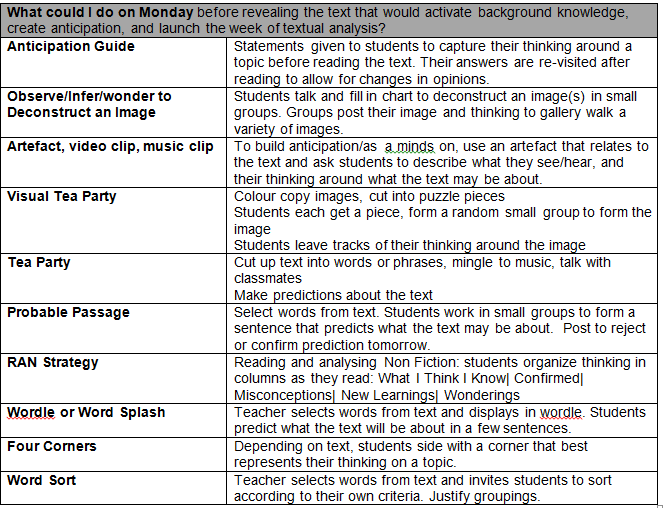
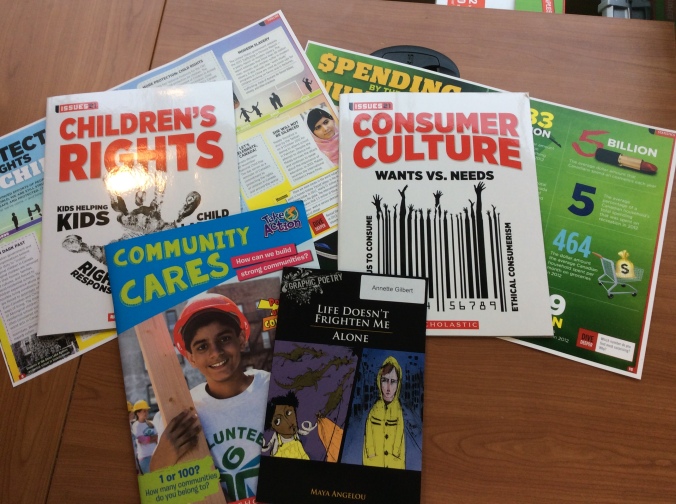
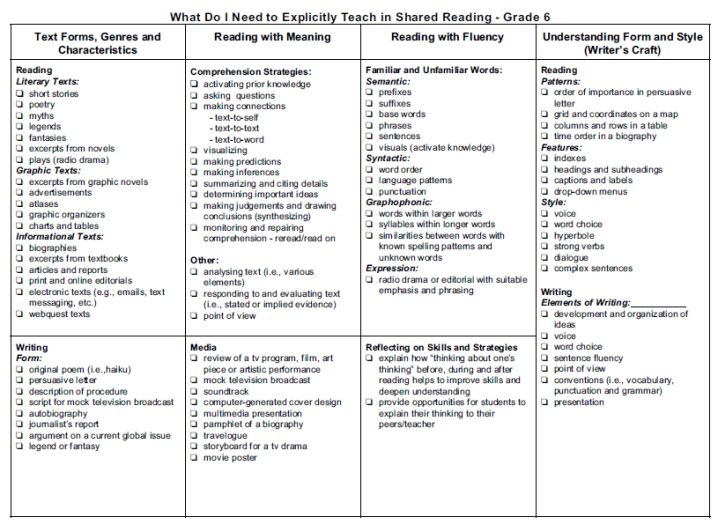


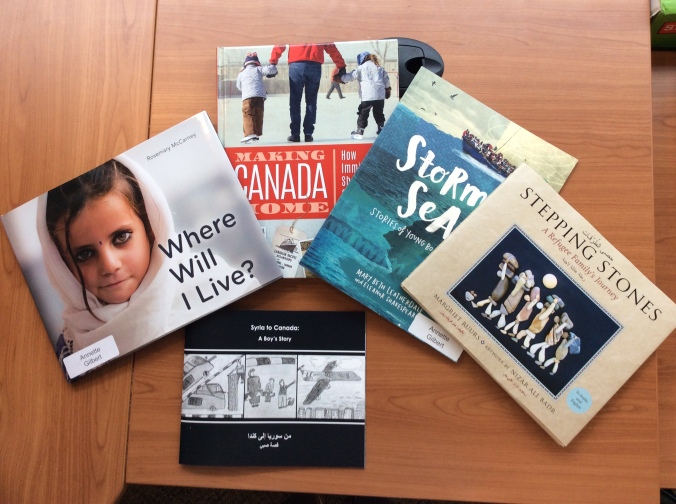

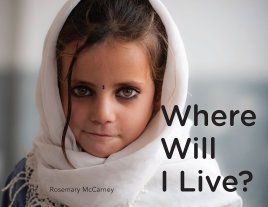
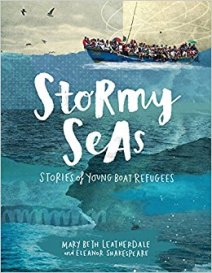
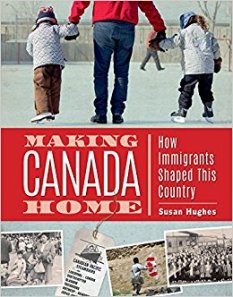
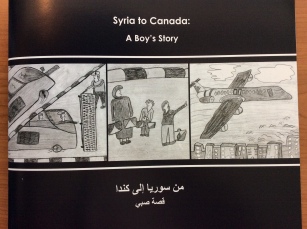
 Summer is fast approaching and if you’re a teacher, it’s the ideal time to make a summer reading list. I want to encourage you to think about what titles might be just the ticket that reaches that reluctant reader in your class next year. Maybe you’re changing grades, changing schools or just need a little inspiration beyond the Chapters display. I also want to share some ideas to help you use the books you read over the summer to capture the hearts and minds of your students next year. In this blog, I’m going to share:
Summer is fast approaching and if you’re a teacher, it’s the ideal time to make a summer reading list. I want to encourage you to think about what titles might be just the ticket that reaches that reluctant reader in your class next year. Maybe you’re changing grades, changing schools or just need a little inspiration beyond the Chapters display. I also want to share some ideas to help you use the books you read over the summer to capture the hearts and minds of your students next year. In this blog, I’m going to share: Passion for Reading
Passion for Reading
 just finished Ibi Zuboi’s American Street which is a jarring raw story of family ties with strong complex female leads. Its characters face immigration, detainment, loyalty, drugs, loss of life, domestic abuse. You might think this is not a grade 8 novel. But I would answer: you have to read it because I don’t know your students. I don’t know your community. I do know that kids need to see themselves reflected in our stories, and we can use story to launch conversations about worlds different from our own.
just finished Ibi Zuboi’s American Street which is a jarring raw story of family ties with strong complex female leads. Its characters face immigration, detainment, loyalty, drugs, loss of life, domestic abuse. You might think this is not a grade 8 novel. But I would answer: you have to read it because I don’t know your students. I don’t know your community. I do know that kids need to see themselves reflected in our stories, and we can use story to launch conversations about worlds different from our own.